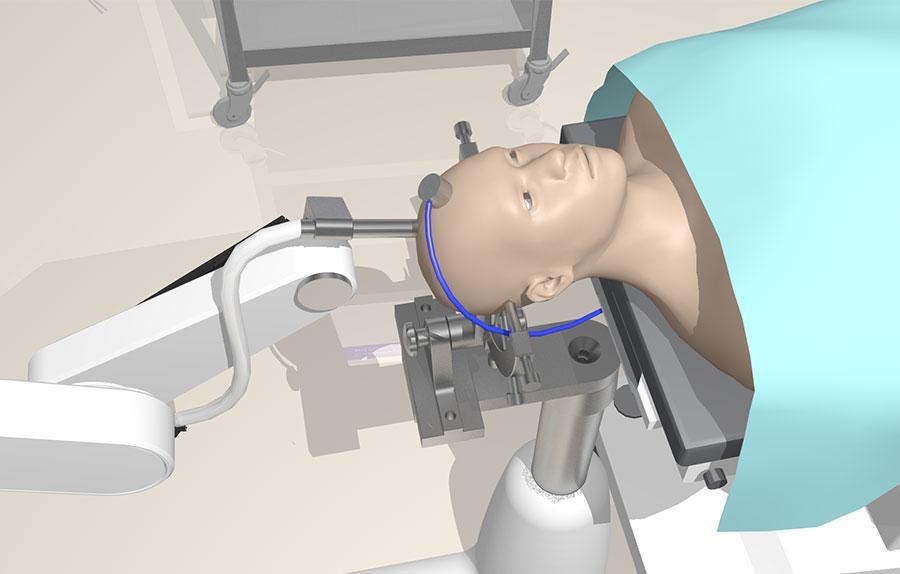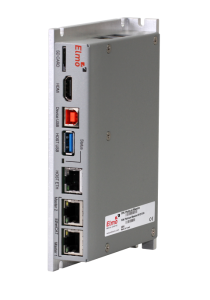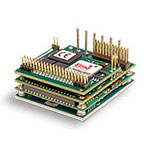Background
“First, do no harm.” Although Hippocrates wrote those words over 2000 years ago, they are still relevant today. In neurosurgery, where errors measured in microns can result in irreversible brain damage, there is a growing focus on minimally invasive surgery. Rather than relying on scalpels and lasers, surgeons are now performing procedures using increasingly sophisticated robots.
In an EU-funded EDEN2020 project, Imperial College London researchers are developing a robotic catheter that can deliver drugs directly to a brain tumor. Early in the project, they needed compact, low-EMI, high-performance motion controllers and drives for the robotic system that would steer the catheter. They found them with Elmo Motion Control.
Read this case study to learn about:
- The benefits of Elmo’s low-EMI servo drives for safe and reliable robotic neurosurgery procedures
- How to achieve high performance in multi-axis technologies with the right controller
- How Elmo’s proprietary Fast and Soft Switching Technology (FASST) enables >99% efficiency and negligible EMI

Machine requirements
The steerable needle in the EDEN2020 system is based on the Programmable Bevel-tip Needle (PBN), a flexible needle that can navigate a fast and precise route through the brain using preoperative MRI scans and intraoperative ultrasound imagery to generate path commands and minimize tissue damage. When the PBN reaches the tumor, it delivers a chemotherapy payload directly into the tissue. The PBN consists of four interlocking, longitudinal plastic segments, each of which incorporates a drug delivery channel and is driven by an ironless motor at its distal end. The channel also contains a fiber-optic cable used for shape sensing. By pushing one segment forward so that it slides over the others, the system can cause the tip of the needle to curve significantly so that the needle can be navigated through brain structures to target even deeply embedded tumors.
Steering a robotic catheter through the brain is an ambitious goal with high performance demands. The four-axis system requires high synchronization and precision, as any errors could cause irreparable harm. At the low-level control range, the system needs to operate with an accuracy of 10 μm.
Performance is only part of the challenge. In an operating theater, the components need to be small, quiet and not interfere with imagery or signals of other crucial surgical instruments.
The Elmo Motion control solution
- Gold Twitter servo drive
- Platinum Maestro multi-axis motion controller
Servo drive
Since safety was the primary concern, the Imperial College team selected the Elmo Gold-Twitter (G-TWI) servo drive, the smallest STO (SIL-3) certified drive available on the market. A mere 35 mm x 30 mm, it minimizes the footprint of the portable surgery station and its efficient pulse-width modulation (PWM) switching process results in extremely low EMI, meeting IEC61800-3 and IEC61326-3-1 international standards without using external devices, such as EMI filters. Its conducted and radiated emissions are also very low, making it suitable for medical applications.
Controller solution
The system requires a high-performance motion controller based on closed-loop feedback and input from the MRI and ultrasound units to plan its path. The Imperial College team chose the Platinum Maestro (P-MAS), an off-the-shelf motion controller that streamlines motion integration with features including simple interconnection to all drives, a library of motion algorithms and automatic Enhanced Field Bus support, including EtherCAT, Master (with full redundancy support) and EtherCAT Slave Network. It controls all drive parameters, simplifying maintenance operations and minimizing downtime. The Platinum Maestro also features enhanced fieldbus support, including EtherCAT cycling at a rate of 250 µs in the Imperial project.
The outcome
The EDEN2020 project has ambitious goals that require small, reliable components with high performance and minimal EMI. The Elmo Motion Control Gold Twitter drives and Platinum Maestro controllers delivered high performance and reliability in compact, low-EMI solutions. Special features designed for ease-of-use simplified integration and saved valuable engineering resources. “In addition to the core benefits of the Elmo Motion Control technology, a key factor in our choice of control solution for the project was the reduced development time,” says Eloise Matheson, a researcher on the project.
Prof. Ferdinando Rodriguez y Baena, the Project Coordinator for EDEN2020, adds: “The system will be able to sense and perceive intraoperative, continuously deforming brain anatomy at unmatched accuracy, precision and update rates.”
For More Information



